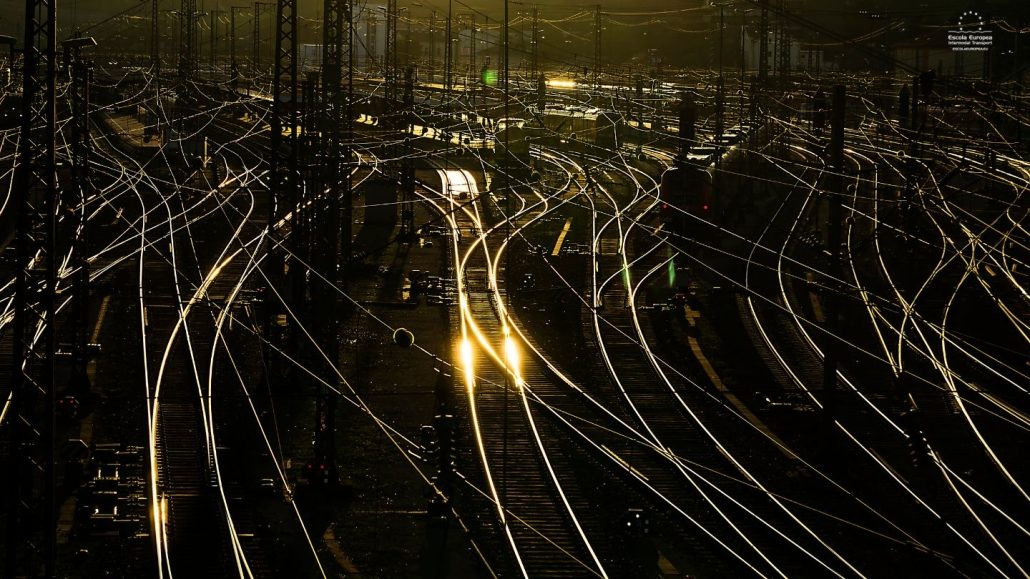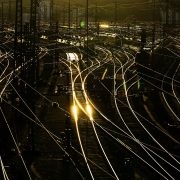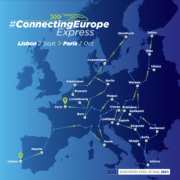On Track for the Future: Rail Freight in Europe 2024
This month in our #DidYouKnow series, we’re taking a closer look at the dynamic and ever-evolving world of rail transport. Cast your mind back to 2021, hailed as the European Year of Rail. This initiative wasn’t just a ceremonial nod to an old industry; it symbolised a renewed commitment to transforming Europe’s transport landscape. But what has changed since then? How has rail freight adapted and grown in this period? And more importantly, as we look towards 2024, what are the exciting developments and prospects that lie ahead for rail freight in Europe? In this post, we’ll delve into the successes, the challenges, and the innovative strides shaping the future of rail freight, a sector that’s proving to be more than just a link in our supply chains, but a key to sustainable, efficient, and resilient transportation in Europe.

Current State of Rail Freight in Europe
Rail freight is becoming increasingly vital in the European transport landscape, especially in the context of ecological sustainability. As part of the European Green Deal, rail freight is identified as a key player in reducing greenhouse gas emissions. The goal? To shift a substantial portion of freight from road to rail, aiming for a 30% share of rail in European freight transport by 2030.
Here’s why rail freight stands out:
- Emission Efficiency: A freight train emits just 24 grams of greenhouse gases per ton transported and kilometre travelled, making it significantly cleaner than road freight. This efficiency is less than one-fifth of the emissions produced by road freight vehicles.
- E-Mobility Dominance: The rail freight sector is already ahead in e-mobility. The more we take advantage of green electricity, the closer we get to net-zero emissions.
- Continued Potential for Improvement: As green energy sources become more prevalent, the rail sector’s environmental footprint is poised to reduce even further.
These are some of the factors that underscore the strategic importance of rail in Europe’s transition to a more sustainable transport network.
Challenges and Opportunities
While the prospects of rail freight in Europe are bright, the path is not without its challenges. A crucial aspect of realizing the EU’s ambitious target for rail freight involves addressing the current obstacles and harnessing the emerging opportunities. So let’s have a look at what they are:
Obstacles to Growth:
- Infrastructural Variability: The EU member states present a diverse picture in terms of rail freight capabilities. For instance, while Lithuania boasts a rail freight share of 64.7%, Greece lags behind with just 3.2%. Such disparities reflect the varied infrastructural and economic landscapes across the region.
- Territorial Fragmentation: Perhaps the most significant hurdle is the lack of standardization. In contrast to road transport’s seamless cross-border operations, rail freight often encounters barriers at national borders due to differing technical standards and regulations. This territorial fragmentation hinders the efficiency and attractiveness of rail freight as a pan-European transport solution.
Opportunities for Advancement:
- Investment in Infrastructure: According to the latest EU report, there’s been significant investment in rail infrastructure. In 2020, EU Member States reported a total funding of €40.65 billion for rail infrastructure. This investment is pivotal in modernizing and harmonizing rail networks across Europe.
- Electrification of Tracks: The move towards electrification is noteworthy. With varying rates of network electrification across EU countries, there’s substantial scope for expansion, enhancing both the environmental and operational efficiency of rail freight.
Future Outlook and Things to Look Out for in 2024
As we advance into 2024, the rail freight sector in Europe is poised at an exciting juncture, with several developments worth watching:
- Increased Infrastructure Investment: Ongoing investment in rail infrastructure will continue to be a major focus, aimed at enhancing efficiency and connectivity across the continent.
- Advancements in Automation and Digitization: The rail freight industry is rapidly embracing technological innovations. Automation in rail operations promises to enhance efficiency and safety, reducing the reliance on manual processes. Digitization, on the other hand, is set to revolutionize the way freight is managed and tracked, offering more transparent, reliable, and efficient logistics solutions. These advancements are not just futuristic concepts; they are becoming tangible realities that are reshaping the landscape of rail freight.
- Standardization Efforts: The push towards standardization across the EU rail network is expected to gain momentum. This will facilitate smoother cross-border rail freight movement, making it a more attractive option for shippers.
- Growth in Rail’s Freight Share: With these initiatives and investments, an increase in rail’s share of the overall freight transport market in Europe is anticipated. This growth will be a testament to the sector’s adaptability and commitment to meeting the evolving demands of trade and commerce.
These trends signal a robust future for rail freight, contributing significantly to a more sustainable and interconnected Europe.
Concluding thoughts
As we look towards the future, the significance of rail freight in Europe’s transport network becomes increasingly clear. Since the European Year of Rail in 2021, the journey towards 2024 has been marked by remarkable strides, setting the stage for an even more promising path ahead.
Innovations in rail technology, including automation and digitalization, are set to revolutionize freight transport. These advancements are not just about enhancing efficiency; they’re about reshaping how goods move across Europe. Moreover, the strengthening of supply chain resilience through rail freight is becoming increasingly crucial in a rapidly changing global trade landscape.
The road ahead involves enhanced cooperation among EU nations, key to overcoming the challenge of territorial fragmentation and achieving a truly integrated rail network. This cooperation is vital not only for the internal dynamics of the EU but also for its role in global trade and logistics, where rail freight offers a reliable and efficient alternative to other modes of transport.
In light of these exciting developments, our upcoming course on intermodal freight operations – SURCO Aragón. It’s an opportunity for professionals to gain critical skills in optimising transport operations, balancing cost, time, and environmental considerations, with a special focus on integrating rail for maximum efficiency and sustainability.
Are you ready to be at the forefront of this exciting sector? Explore this edition of our SURCO course in intermodal freight operations (offered in Spanish) and gain the expertise to optimise your transport operations, integrating rail for maximum efficiency and sustainability.
Join us in shaping the future of transport!
We’ve done our research – so should you! Check out our sources below to delve more deeply into the topic:
SOURCES
- “The Future of Rail Freight in Europe” – DHL Freight Connections. DHL Freight Connections.
- “What has changed in European rail: the highlights of the latest EU report” – RailTech, October 2023. RailTech Article.
- European Environment Agency. European Environment Agency Website.
- European Commission – European Green Deal. European Green Deal Information.
- European Commission’s Transport and Mobility Overview. European Commission – Transport.
- EU Infrastructure Investment Reports. EU Infrastructure Investment Data.
- European Railway Review: Articles and reports on the latest trends and future projections in rail transport within Europe. European Railway Review.









